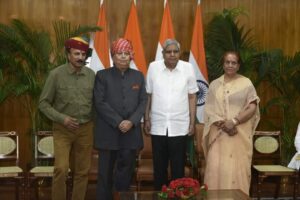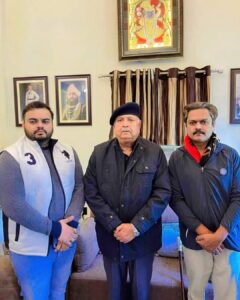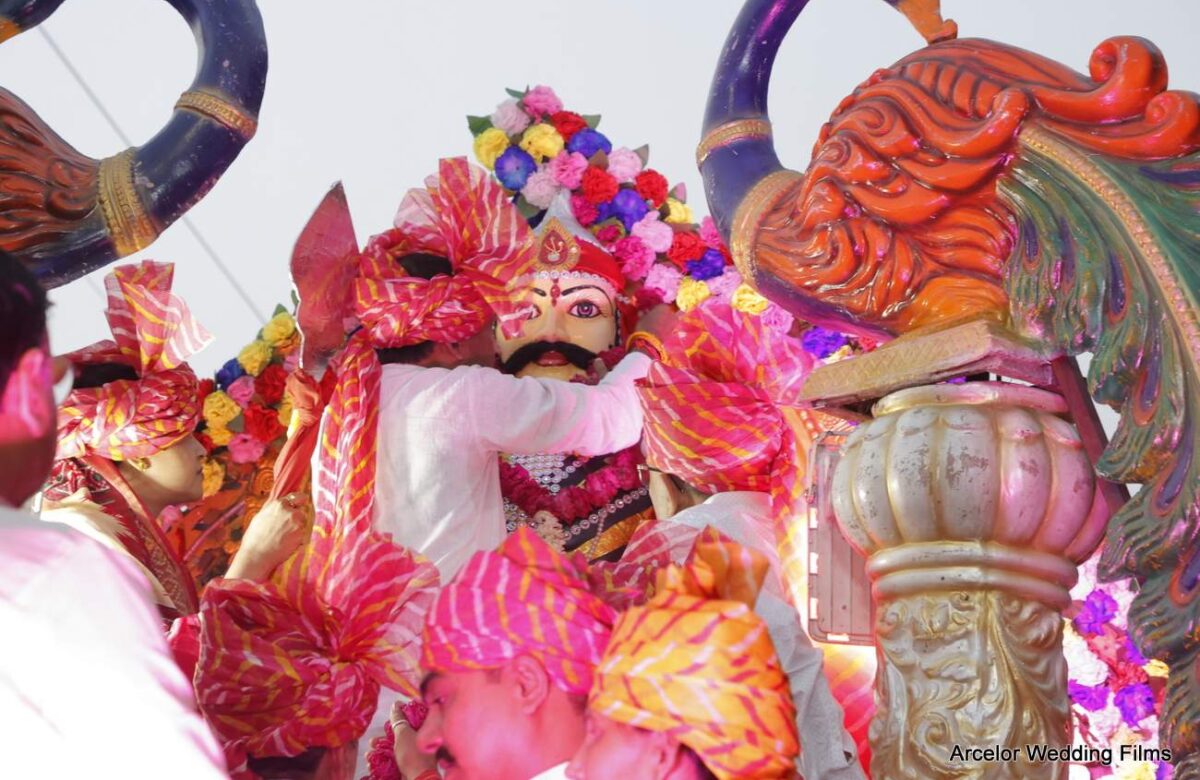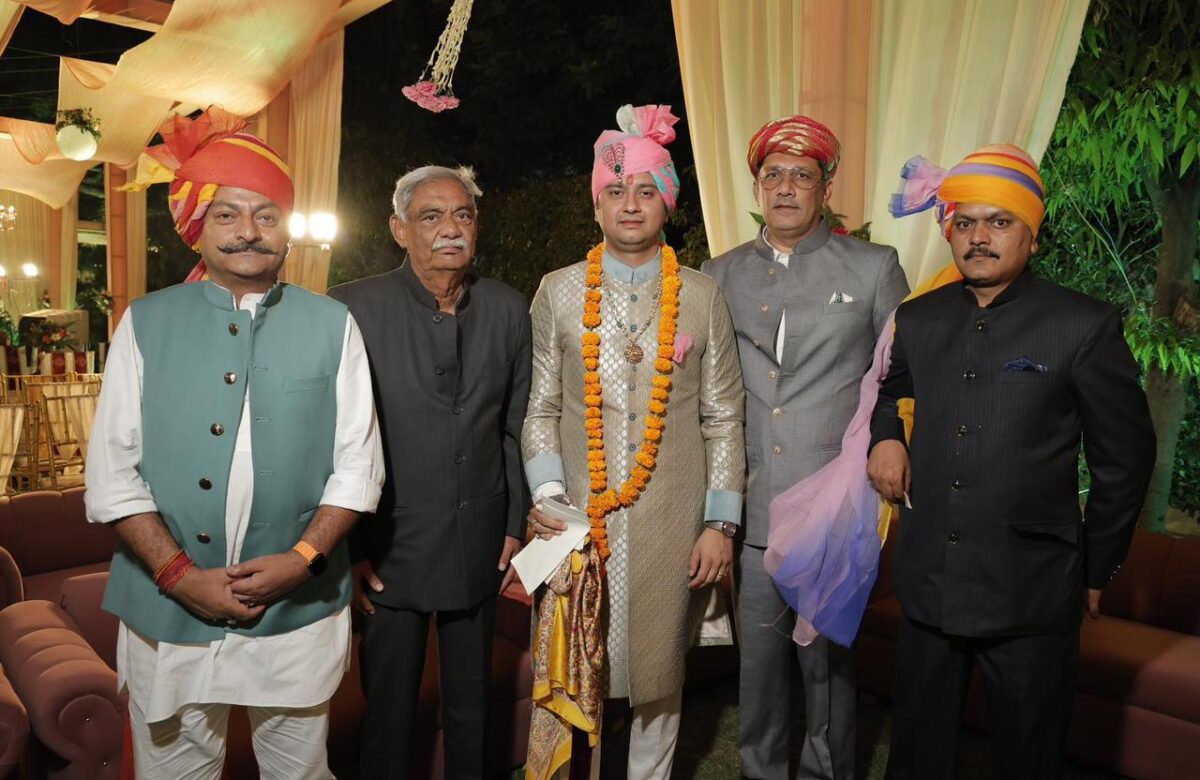India’s history is deeply entwined with the narratives of numerous communities, each of which has made a unique contribution to the cultural and historical landscape of the nation. The heart of Rajasthan carries the echoes of battle that tell a story of pride, gallantry, and courage. The growth of the Rajput people is an amazing story of bravery and tenacity that dates back to the Middle Ages. One such tale unfolds through a captivating journey of the rich cultural heritage of the Rajput dynasty. The historical development of medieval India, especially in the northwest, is home to the impressive Rajput people, known for their courage, fighting ability, and unwavering sense of honour. The Hindu Kshatriya military class, named after the Sanskrit phrase ‘Rajaputra,’ meaning ‘son of the monarch,’ had a significant role in shaping the political, social, and cultural landscape of many different regions.

We interviewed Raja Manvendra Singh Ji, a proud descendant of the Rajput clan from the heart of Rajasthan. With a glint in his eye, Raja Manvendra Singh Ji narrated a story that has been passed down through generations. While interviewing, he began by recounting the ancestral roots of his family, tracing their lineage to the Vaishampayana gotra associated with Sage Vaishampayana.
In addition, he asserted that his lineage was a descendant of the legendary Solar Dynasty (Suryavansha), tracing its roots to Lord Rama, the seventh incarnation of Lord Vishnu. He is a descendant of the late Maharaja Pradyuman Singh Ji, who was the second son of the late Maharaja Lakshman Singh Ji (then Speaker of the Rajasthan Congress). The late Maharaja Pradyuman Singh Ji served as the director of the horticulture department at Nagpur, MP. He married the late Shri Mati Rani Indira Kumari, daughter of Rao Krishan Pal Singh Ji of Awagarh. Manvendra Singh Ji is the second of four sons and two daughters who grew up in Mathura. After obtaining his bachelor’s degree, he continued his studies further to obtain a doctorate in social work at the Institute of Entrepreneurship and Management, recognized by the United States Council for Training and Development. Manvendra Singh Ji is the current president of Akhil Bharatiya Kshatriya Mahasabha. Akhil Bhartiya Kshatriya Mahasabha was founded in 1897 by his great-grandfather, Raja Balwant Singh Ji for the betterment and upliftment of society. The Akhil Bhartiya Kshatriya Mahasabha is a general committee comprising 150 ministers from 23 different states that organizes regular meetings to promote the socio-economic well-being of the general population. The commission was established to improve people’s lifestyles, especially reaching out to people in real suffering by bringing about reforms in people’s social and political lives. Raja Balwant Singh Ji was one of the prominent members who contributed to the strengthening of education in the state. He is widely known for his phenomenal epoch-making progress. Currently, the organisation is working effectively in 24 different states of India aiming to provide financial aid and other support irrespective of caste to people worldwide.

Deepening the discussion, Manvendra Singh ji related stories of legendary Rajput fighters like Maharana Pratap, Prithviraj Chauhan, and Rana Sanga, whose valour on the battlefield is etched in the historical annals. He continued that tradition and spoke about his contribution towards the upliftment of society. He has been interested in social development since his early 20s and always wanted to make a positive impact on the community. Due to his political background, he was a member of the Lok Sabha Committee of the Mathura Assembly for three years. He contested the election against Chaudhary Charan Singh ji’s wife, but he defeated her by a large margin at the age of 35. He has been praised highly ever since by all. He was connected to Rajiv Gandhi, to the point where he requested an electoral ticket from Indira Gandhi following Gandhi’s assassination. When he had another chance in 2004, he easily defeated Gayatri Devi with a sizable margin of votes. He had no trouble at all lending a hand to the nation. Throughout his parliamentary years, he helped young people by offering jobs on the railroads, in the police, and other industries. In addition, he wrote a letter to the prime minister at the time asking him to use PM funds to pay for facility fees, medical expenses, and other necessities for the underprivileged.

Well, he also reflected a perfect insight into the national warrior, reflecting his non-prejudice attitude towards caste and religious aspects. He supported all societal segments that relied on him and never practised discrimination. He also said that he generously welcomes people into his home and embraces them with tea and food. When asked about the current religious and caste conflicts, he felt stressed. He argues that unnecessary religious disputes and caste-based strife will exacerbate the situation, so it’s critical to maintain national peace and harmony while also taking action to protect others’ lives. Therefore, actions must be taken to ensure that everyone in the country lives in peace and harmony with one another. When the conversation turned to the Rajput community’s efforts to preserve its heritage and traditions, he stated that to enhance the awareness and significance of our past heroes they came up with the idea to install statues of real warriors such as Prithvi Raj Chauhan, Rani Laxmi Bai, Maharana Pratap Singh and many other all across India as a tribute to their bravery. He spoke about the responsibility of passing on stories and values to the younger generation. A special request was made to the Government of India to revise the textbooks by adding a chapter on the history of Rajput rulers. This will foster a strong sense of national pride.
At the end of the interview, Manvendra Singh Ji‘s passion for Rajput tradition was evident in every word. The Rajput dynasty, with its stories of courage and honour, lives on through the legacy of men like him. It is a timeless legacy that connects the glorious chapters of Rajput history with the present day.



